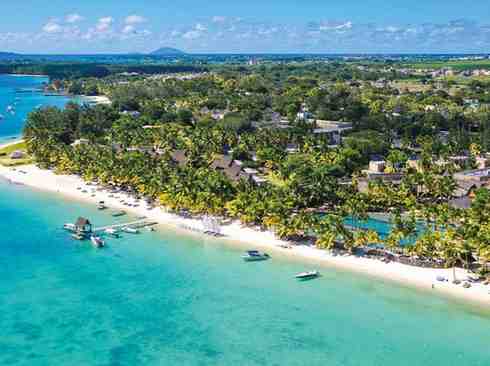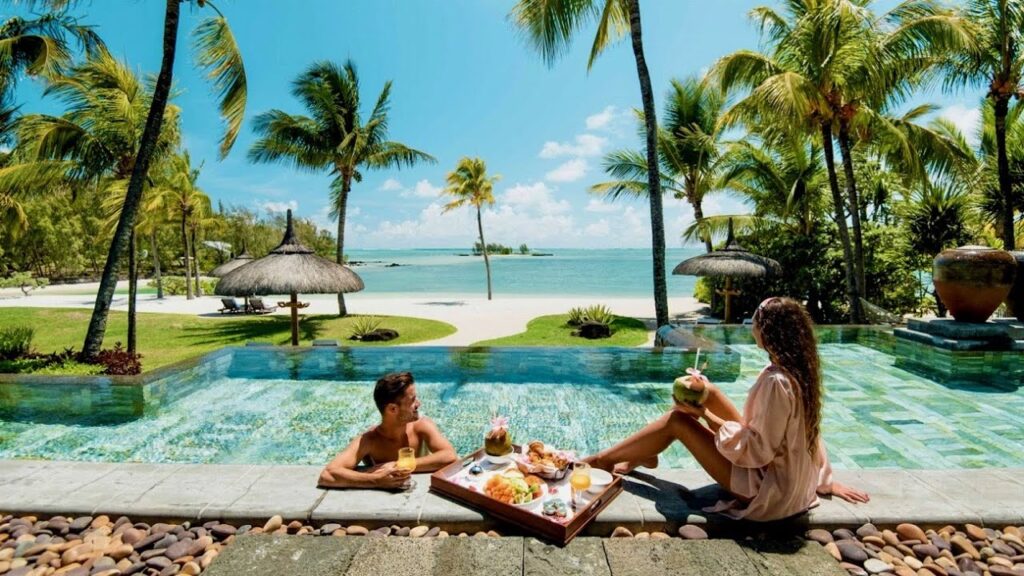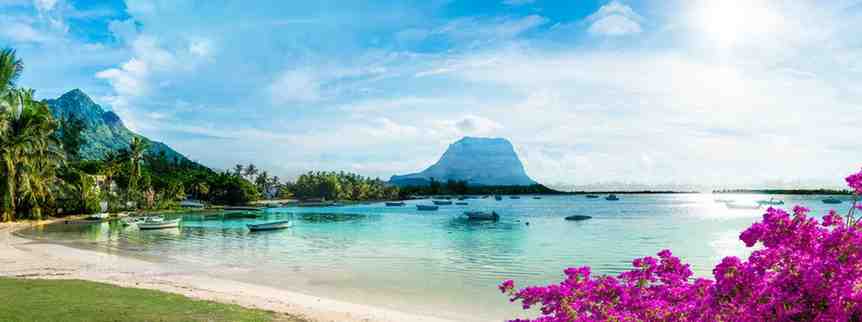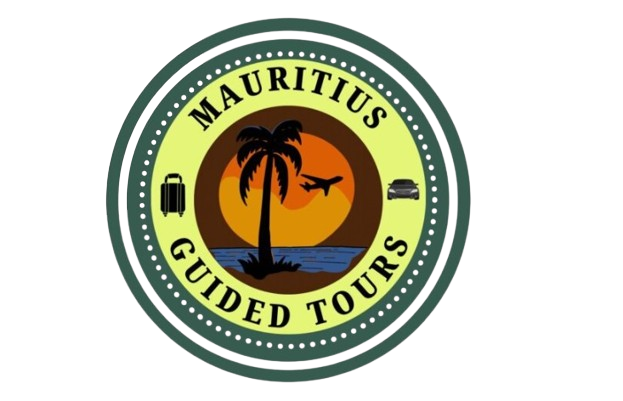Mauritius isn’t your typical beach destination. Yeah, there are gorgeous beaches — that’s a given. But what sets this place apart? Everything sits close together. Drive for an hour, maybe two max, and you’ve crossed the entire island. No endless highway trips where kids lose their minds in the backseat. English works everywhere, so ordering food doesn’t turn into an embarrassing game of charades. Medical facilities? Better than some places back home, honestly — making it one of the Best Family Tours in Mauritius for comfort, safety, and easy travel.

Getting Around Actually Makes Sense
Most spots sit within 45 minutes of each other. Sounds boring? Try explaining that benefit when your toddler needs a bathroom five minutes into a three-hour drive. You won’t deal with that nightmare here. Locals grew up speaking English and French – conversation flows naturally at restaurants, shops, tour desks. Doctors trained overseas mostly, so healthcare matches Western expectations. Crime stays low even where tourists congregate heavily.
Those Massive Lily Pads Everyone Posts
Sir Seewoosagur Ramgoolam Botanical Garden sounds fancy, right? Just call it Pamplemousses Garden like locals do. Those giant lily pads you see on Instagram. They’re legit. Not edited, not fake – that huge. Kids go nuts seeing plants bigger than their bed at home. Paths work fine for strollers, which matters more than you’d think. Shade trees scatter throughout, so midday visits won’t roast you alive. Plenty of benches when tiny legs decide walking is suddenly impossible.
Crushing Sugarcane Beats History Class
Sugar museums could’ve been snoozefests. They’re not, thankfully. Kids grab actual equipment and crush real sugarcane stalks. Then they drink what they just made – juice tastes way better when you produce it yourself. History suddenly clicks when you’re doing it, not reading some dusty plaque nobody cares about. Show them where table sugar comes from before it magically appears at grocery stores.
Lagoons Where Everyone Swims Confidently
Coral reefs basically act like giant walls blocking rough ocean waves. Water stays crazy clear – count fish swimming past your toes if you want. Depth sneaks up gradually over maybe 100 meters or more. Little kids splash around in water barely covering their ankles while older ones wade deeper. Parents relax somewhat instead of panicking about sudden drop-offs and riptides.
Dolphins Show Up Like Clockwork
Dolphin watching tours leave early – like 6 AM early. Worth it though. Spinner dolphins hang in specific spots most mornings, doing their acrobatic thing. Flipping, spinning, generally showing off because they apparently know everyone’s filming. Some tour companies let you swim near them following safety rules. Teenagers eat this up – instant social media content. Just don’t expect to sleep in that morning.
Seeing Fish Without Getting Hair Wet
Not everyone wants ocean water to mess up their hair or get salt in their eyes. Glass-bottom boats fix that problem completely. Kids smoosh their faces against clear panels while tropical fish swim underneath. Perfect for when grandma tags along but refuses to touch ocean water. Zero swimming skills required, yet you still experience underwater worlds clearly.
Zip-Lining Feels Like Flying
Parks built courses targeting families specifically. Easier lines for nervous kids, tougher ones for parents trying to impress their teenagers. Safety gear includes like five different backup systems – these operators don’t mess around with regulations. Guides obsessively check every harness before letting anyone zip away. Usually needs to be 1.2 meters tall minimum, which cuts out small kids unfortunately.
Quad Biking Gets Teenagers Off Their Phones
Teenagers dig quad biking way more than laying by pools pretending to be bored. You cruise through sugarcane fields, bounce along coastal tracks, stop at viewpoints like Baie Maconde for photos. Need a driver’s license, but passengers can be pretty much any age. Gets bumpy and dusty as hell – which honestly makes it way more fun.
Walking on the Ocean Floor Sounds Crazy
Underwater walking seems weird until you actually try it. Special helmets pump air constantly while you stroll along the sandy bottom. Feed fish, poke sea cucumbers gently, experience being underwater without swimming at all. Non-swimmers finally get what hype is about. Most places require kids to be around seven years old minimum, depending on the operator really.

Museums Save Rainy Days
Blue Penny Museum prevents rainy afternoons from devolving into tablet time. Houses seriously rare stamps that made Mauritius legendary among collectors way back. Sounds nerdy – it kind of is – but interactive stuff keeps kids engaged better than expected. AC feels amazing after being outside in humidity. Programs run often enough you can drop in whenever without strict scheduling.
Malls Aren’t Just for Shopping Here
Shopping centers pack entertainment zones – bowling, arcades, huge indoor playgrounds. When cyclones roll through (rare but happens), these places become absolute lifesavers. Food courts have everything from spicy local curry to McDonald’s for kids who refuse adventure. Other families hang out here too, so you might make vacation friends.
Touching Starfish Before Ocean Swimming
Aquariums let kids gently handle starfish and check out sea cucumbers with staff watching. Learning to respect marine life here beats freaking out during first snorkeling attempts. Feeding shows demonstrate how different creatures eat – weirdly fascinating even for adults. Perfect for easing younger kids into ocean environments before hitting actual beaches.
Pereybere Beach Just Works
Pereybere Beach nails convenience hard. Restaurants literally step from sand. Bathrooms stay relatively clean by beach standards. Gear rentals right there without hiking somewhere. Protected bay keeps waves chill even when wind picks up. Lifeguards watch swimmers during busy times instead of scrolling TikTok.
Kayaks With See-Through Bottoms
Clear kayak floors turn paddling into instant marine biology lessons. Fish swim directly below you while working toward the next cove. Rental places stock kids-sized ones that fit eight-year-olds properly. These stay stable even when excited kids shift weight suddenly spotting something cool.
Paddleboarding Looks Scary but Isn’t
Stand-up paddleboarding intimidates people initially – it looks harder than it is. Most beginners stand up within 10-15 minutes with decent instruction. Works your core naturally while exploring calm areas at your own pace. Wider boards let parents bring small kids along, building their confidence for trying solo later.
Markets Beat Boring Souvenir Shops
Local markets hit all your senses at once – bright produce stacks, spice smells everywhere, vendors yelling prices in three languages. Kids practice haggling buying trinkets, learning negotiation through actual experience. Vendors often toss free samples to children, showing off that Mauritius hospitality everyone mentions. Way more memorable than grabbing overpriced stuff at hotel gift shops.
That Famous Red Church Everyone Photographs
Red Roof Chapel you see in literally every Mauritius photo? Actually, it is worth visiting in person. Kids learn how different religions coexist peacefully here without anyone making it weird. Architecture teaches itself when buildings look this distinctive. Dress codes apply – good chance to discuss respecting other cultures with kids.

Cooking Classes That Don’t Suck
Family cooking sessions get everyone working – grinding spices, chopping stuff, learning techniques local chefs inherited from their grandmothers. Everyone participates regardless of cooking ability back home. Best part? Eating what you made afterward. Often gets kids trying ingredients they’d refuse at regular restaurants. Making it yourself changes willingness to experiment somehow.
Safari Vibes Without Flying to Africa
Casela Nature Park mixes African safari concepts with island flavor. Ride through enclosures with lions, giraffes, zebras just like actual safaris. Petting zones have gentler animals perfect for toddlers learning to touch animals properly. Enough variety that families kill entire days without repeating stuff. All ages find something appropriately challenging.
Tortoises Older Than Great-Grandparents
Giant tortoises move slowly enough that even shy toddlers can approach safely. Some past 100 years old already – helps kids grasp longevity and why conservation matters. Sanctuary focusses on education alongside fun. Kids touch ancient shells gently under supervision, learning about protecting habitats.
Birds That Actually Pose for Photos
Parrots mimic words, peacocks strut showing off tail feathers, and tons of species exist nowhere else on earth. Birds deliberately pose for cameras seemingly, totally comfortable around humans after years of positive interaction. Daily shows feature trained birds doing smart tricks while entertaining crowds. Photography becomes ridiculously easy here.
May Through December Wins Every Time
Best family tours in Mauritius happen May-December when temps stay comfortable and rain shows up way less. Peak season matches school holidays, so book months ahead or face disappointment. Sunshine stays consistent, activities rarely get weather-cancelled, maximizes what you paid for. These months just work better overall for family travel.
Cheaper Months Come with Trade-Offs
January-April brings serious heat and possible cyclones. But prices drop hard – sometimes 40% less than peak season. Crowds disappear, popular spots feel less packed. Restaurants seat you faster without waiting. Handle heat decently and stay flexible with weather? Savings let you afford nicer hotels or extra activities easily.
April and November Split the Difference
These months compromise between peak prices and sketchy weather. Temps stay pleasant while costs drop roughly 25% from high season. Cultural stuff like Diwali adds unique experiences. Just expect more locals at certain spots during festivals. Still beats full peak season pricing though.

Pack Smart or Regret It
Reef-safe sunscreen protects skin AND coral that takes forever recovering from chemical damage. Small multiple bottles beat one large – losing one doesn’t ruin everything. Quick-dry clothes cut laundry needs during longer trips. Waterproof pouches save phones during inevitable beach days and boat rides. Leave fancy jewelry home – won’t need it anyway.
Renting Cars Makes Sense Here
Car rentals give schedule freedom families with kids need desperately. Child seats meet international standards, though bringing familiar ones from home comforts anxious toddlers better. GPS includes English menus; roads have decent signs making navigation easy for first timers. Driving happens on the left side – practice a bit before hitting busy areas.
Where You Sleep Matters
Options range from basic apartments to crazy fancy resorts with multiple pools and kids’ clubs. All-inclusive bundles everything into one price – simplifies budgeting massively. But eating at local restaurants exposes kids to real food and culture resort buffets can’t touch despite convenience. Mix both approaches for balanced experiences honestly.
Have questions? Contact our team for personalized tips.
Beach Time for Really Small Kids
Beach exploring captivates toddlers who find shells, build castles, chase waves at their speed. Tidal pools trap tiny fish and crabs that fascinate little ones without overwhelming them. Gentle waves provide sensory stuff many kids find genuinely calming. Supervision stays essential even in shallow water though – never forget that.
Gardens That Actually Work for Strollers
Botanical gardens keep paved paths that work for strollers without forcing parents to carry tired toddlers constantly. Benches pop up everywhere for nursing or just resting during exploration. Some include playground equipment designed for crawlers up through running preschoolers. Usable for families with very young kids.
Kids Clubs Give Parents Breaks
Professional kids clubs organize age-appropriate activities while parents grab couple times. Trained staff run games, crafts, outdoor play for different ages. Many include meals, keeping routines normal despite vacation chaos. Gives parents guilt-free breaks for spa visits or romantic dinners without constant worrying.
Packages Cut Costs Significantly
Combined tickets drop costs way down versus buying everything separately. Operators bundle transport, food, and admission into discounted packages that simplify planning too. Direct website booking sometimes beats third-party sites. Compare options though – make sure you’re getting real value not just fake savings.
Kitchens Slash Food Budgets
Places with kitchens let families prepare breakfasts and pack lunches, substantially cutting food costs. Markets sell tropical fruits and produce at fractions of restaurant prices. Introduces kids to weird exotic flavors while saving money. Morning prep saves time for early starts suiting activities like dolphin tours requiring dawn departures.
Free Stuff Still Exists Everywhere
Public beaches charge zero while providing entertainment kids never tire of. Viewpoints give sick visitors without admission fees. Forest trails cost nothing beyond getting there. Sunset watching becomes free nightly entertainment families enjoy together regardless of budget. Not everything requires constantly spending money.
More ideas in our top attractions guide.
Ocean Isn’t a Swimming Pool
Even calm lagoons get occasionally ripped currents catching swimmers off guard. Lifeguarded beaches help but parents staying alert remain crucial under age ten. Floaties help weaker swimmers feel secure but shouldn’t replace actual supervision and teaching proper water safety. Ocean deserves serious respect always.
Sun Burns Shockingly Fast
Tropical UV roasts unprotected skin surprisingly quick, especially pale visitors from cold places. Do outdoor stuff before 11 AM or after 3 PM dodging peak radiation. Wide hats, long sleeve swim shirts, frequent shade breaks prevent nasty burns ruining remaining vacation days. Reapply sunscreen every two hours – not optional here.
Mosquitoes Love Dawn and Dusk
Mosquitoes emerge mainly at dawn and dusk near water, requiring repellent during vulnerable times. AC rooms or screened windows kill nighttime buzzing disturbing sleep. Serious mosquito diseases stay rare but prevention beats treatment traveling with young kids. Apply repellent religiously during risky hours.
Frequently Asked Questions
What makes Mauritius suitable for families with young children?
Small size cuts travel time between stuff dramatically. English-speaking locals eliminate communication headaches completely. Shallow protected lagoons give safe swimming spots. International-level hospitals exist when health issues pop up unexpectedly.
Which beaches work best for families with toddlers?
Pereybere Beach, Trou aux Biches, Belle Mare has gradual entries with tiny waves and facilities close by. Lifeguards add security layers. Natural tree shade provides midday sun relief making longer beach stays manageable.
How many days should families spend in Mauritius?
Seven to ten days lets comfortable exploring without exhausting schedules stressing young kids out. Covers beach time, cultural stuff, adventures, plus needed rest days when children require breaks from nonstop stimulation.
Are water activities safe for non-swimming children?
Special equipment like underwater helmets, life vests, glass-bottom boats let non-swimmers join safely. Pro guides prioritize safety while keeping experiences inclusive. Most activities take kids from seven years up depending on comfort levels.
What items should families pack for Mauritius?
Reef-safe SPF 50+ sunscreen, waterproof pouches, light cotton clothes, DEET repellent top must-haves. Bring prescriptions since specific brands might be unavailable. Basic first-aid stuff treats minor scrapes and stings quickly without clinic visits.
Can teenagers find exciting activities in Mauritius?
Zip-lining, kite surfing, diving, quad biking gives adrenaline rushes teens crave beyond typical beaches. Water sports places offer teen-appropriate instruction. Popular beaches create chances to meet other traveling families making vacation friends possible.
How much does a family vacation to Mauritius cost?
Budget crews spend roughly $2,000-3,000 weekly on decent hotels with some activities. Luxury folks drop $8,000-10,000 for five-star resorts, private tours, fancy dining at exclusive beach spots.
Is Mauritius safe for families traveling alone?
Low crime and stable politics make Mauritius among Africa’s safest tourist spots. Heavy security in tourist areas. Genuine local friendliness creates welcoming vibes. Standard precautions apply obviously – avoid isolated spots after dark.
Complete Activity Planning Table
| Activity Type | Best Age Group | Duration | Difficulty Level | Cost Range |
| Dolphin Watching | All Ages | 3-4 hours | Easy | -$ |
| Botanical Garden Visit | All Ages | 2-3 hours | Easy | $ |
| Zip-lining | 8+ years | 2-3 hours | Moderate | -$ |
| Beach Activities | All Ages | Full Day | Easy | Free-$ |
| Underwater Walking | 7+ years | 1-2 hours | Easy | $$$ |
| Casela Nature Park | All Ages | Half Day | Easy | -$ |
| Glass-Bottom Boat | All Ages | 2 hours | Easy | $$ |
| Snorkeling | 5+ years | 2-4 hours | Easy-Moderate | |
| Quad Biking | 12+ years | 2-3 hours | Moderate | $$$ |
| Cultural Tours | 8+ years | Half Day | Easy | |
| Sugar Museum | 6+ years | 2 hours | Easy | $ |
| Kayaking | 8+ years | 2-3 hours | Easy-Moderate | $$ |
| Stand-Up Paddleboarding | 10+ years | 1-2 hours | Moderate | $$ |
| Bird Parks | All Ages | 2-3 hours | Easy | |
| Tortoise Sanctuary | All Ages | 1-2 hours | Easy | $ |
Mauritius crushes family vacation expectations hard. Balances learning with pure fun across all ages. Whether your crew wants cultural deep dives, wildlife close-ups, or beach chilling, this island fits every vibe within tight geography. Safety plus convenience plus variety makes best family tours in Mauritius solid investments creating memories kids remember forever.
Ready to book? Contact us now for help planning everything.
